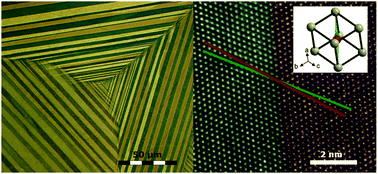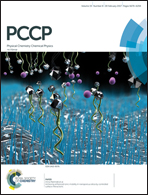On the twinning in ZnPd
Abstract
The intermetallic compound ZnPd has demonstrated excellent catalytic properties in methanol steam reforming. While it is known that defects and microstructures influence the catalytic properties, little is known about the defects occurring in ZnPd. Due to recent advances in synthetic methods, coarse-grained ZnPd samples are accessible. This enables the detection and investigation of twinning in ZnPd by studying the twinned regions from the macroscopic scale by polarised light and electron backscattering diffraction (EBSD) down to the atomic scale by high-resolution transmission electron microscopy (HR-TEM). Twinning occurs in {101} and is coupled with a change in the c/a ratio in the vicinity of the twin boundary. Quantum chemical calculations result in only very small energy differences between the ideal and the twinned structure, explaining the experimentally observed thermal stability of the latter. The chemical bonding was investigated by the electron localizability indicator (ELI) and compared to the one in the ideal structure. The results confirm twinning along the {101} plane and demonstrate the high stability of the twin boundaries after formation.

- This article is part of the themed collection: 2017 PCCP HOT Articles


 Please wait while we load your content...
Please wait while we load your content...